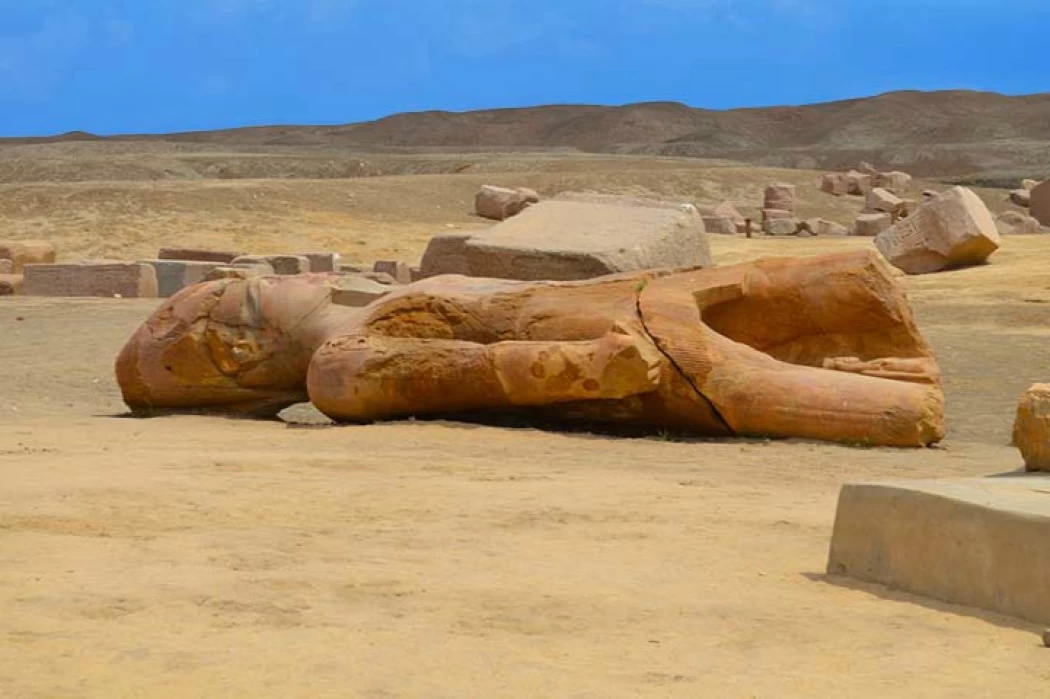
The Ruins of Tanis in Egypt
The Ruins of Tanis
After the end of the 20th Dynasty, the rule was divided into two parts, after the priests of “Amun” took control of the reins of government in the south, so the Raamessa state ended and a new state was established, which is the 21st Dynasty, and as a result of this division there were two new capitals, the old capital in “Thebes” where the priests of “Amun” who overthrew the new state rule, and the new capital in “Tanis”, which is the current San al-Hajar, where the princes of the Delta, who moved the capital from “Bar Ramses” to “Tanis”, rule.
Tanis was the political and religious capital of Egypt during the rule of the Twenty-first Dynasty, due to its strategic and vital location overseeing the Tanisian branch of the Nile River and the possibility of ships reaching it through Lake Manzala, as well as the receding water and the drying up of the Pelusian branch that passed through the city of Rameses, the capital of Egypt before Tanis, led to the migration of the population to that city, and at the same time the prosperity and construction of the city of Tanis, where the tombs of the 21st and 22nd Dynasties are located.
Tanis contains The San al-Hajar archaeological area which is the largest such area located in the eastern Delta, consisting of the ruins of several temples such as The Temple of Amun and some royal tombs from the third transition period, among them tombs for some 21st and 22nd dynasty kings, queens, princes and high ranking military officials, as well as obelisks and various other monuments .Among these are the following examples of the most famous monuments of this important city: Tanis Royal Tombs, discovered by the French archaeologist Pierre Montet on February 27, 1939, are tombs of those kings of the 21st and 22nd dynasties as well as a number of members of the royal family and some senior statesmen.
Following these initial finds, Tanis would later become internationally famous for its many beautiful antiques that were obtained from her tombs making it the subject of interest in the whole world. “This is similar to the discovery of Tutankhamun’s tomb which is located in the Egyptian Museum in Cairo lack any similarity whatsoever,” (Vita in). In other words, Tanis also equals an exclusive hall dedicated merely to some works of art by Tanis in the Egyptian Museum in Cairo tat are just as impressive as those found at Tutankhamen’s grave East Cairn held there bore a striking resemblance with the same pharaoh’s last abode; however, some of them have been moved to the Greater Museum of Antiquities.
Among these artifacts are coffins, gold artifacts, jewelry, lapis lazuli and precious stones, as well as funerary masks of a number of kings of the period, such as the famous golden mask of King Psusennes I and other relics of other kings. The number of royal tombs discovered at Tanis amounted to seven tombs for most of the kings of the 21st and 22nd Dynasties, in addition to other tombs.















